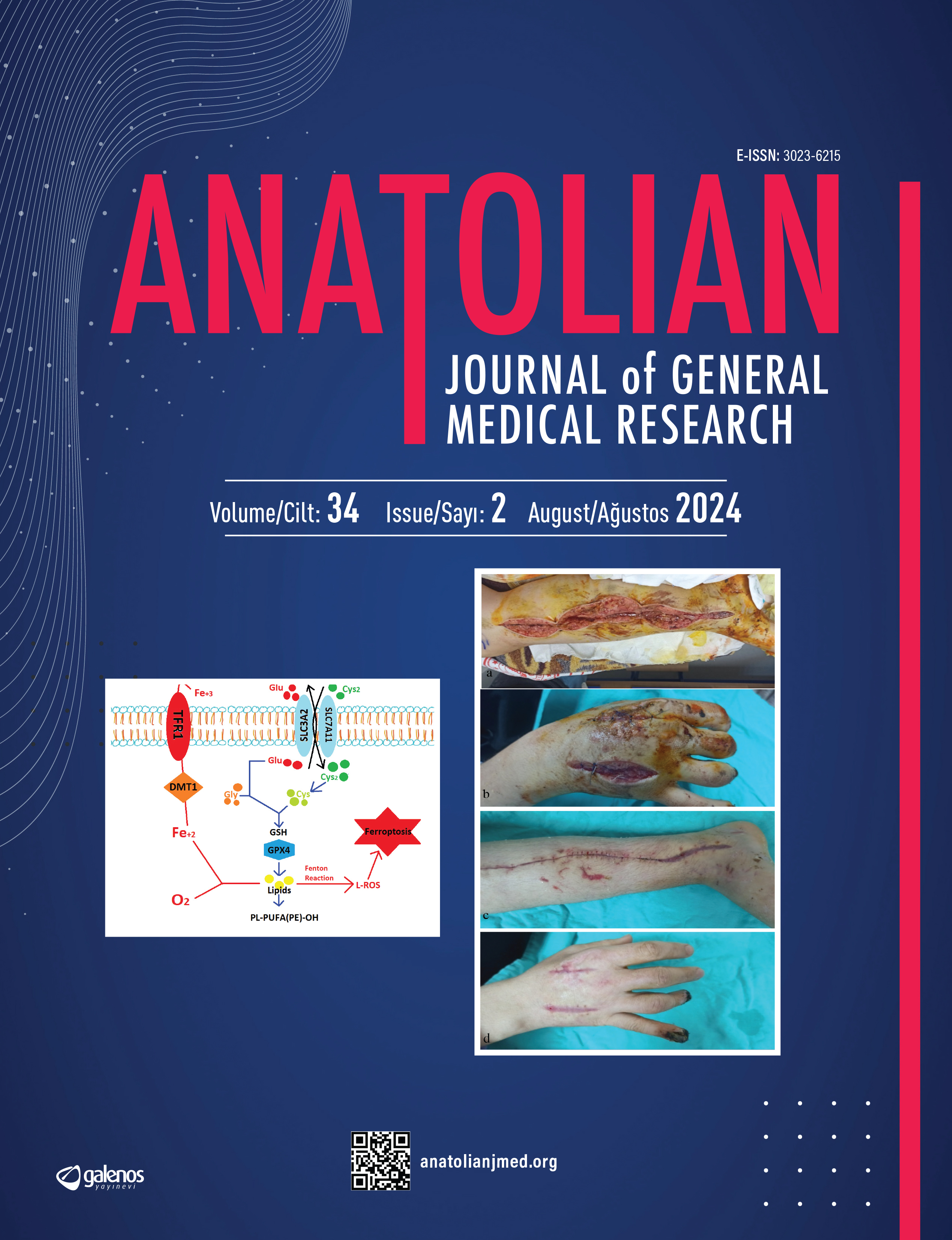








Prognostic Significance of Clinicopathological and Immunophenotypic Properties of Diffuse Large B Cell Lymphoma Patients
Dudu Solakoğlu Kahraman1, Gülden Diniz1, Cengiz Ceylan21Health Sciences University İzmir Tepecik Training and Research Hospital, Department of Pathology, İzmir2Health Sciences University İzmir Tepecik Training and Research Hospital, Department of Hematology, İzmir
INTRODUCTION: Diffuse large B-cell lymphoma (DLBCL) accounts for approximately 30% of non-Hodgkin lymphoma (NHL) in adults. In our study, the clinicopathological features of patients with DLBCL were evaluated retrospectively.
METHODS: The study included 43 patients with the diagnosis of DLBCL between 2009- 2016. Clinical and histopathological features of the patients were collected from the archive of our hospital.
RESULTS: The mean age of the patients was 62.5 (23-86). Twenty four of them (55.8%) were male and 19 (44.2%) were female. Twenty five patients (58.1%) had B symptoms. Early stage (I and II) disease was seen in 21 (48.8%) patients, while advanced stage (III and 1V) disease was seen in 22 (51.2%) patients. Bone marrow involvement was present in 5 (11.6%) patients. Nodal involvement was 39.5% and extranodal involvement was present in 60.5% of patients. The most commen involved node was cervical lymph node and the most involved extranodal site was gastrointestinal system an especially stomach. Immunohistochemically, BCL2 and BCL6, which had prognostic significance, were expressed as 46.5% (n = 20) and 27.9% (n = 12) respectively. A significant relationship was found between Bcl6 protein expression and gender (p <0.001, almost all female patients) and extranodal involvement (p = 0.009). The patients were in a low risk group with a rate of 58.1% and a high risk of 41.9% according to the international prognostic index (IPI). Of 43 patients, 27 were deceased. The mean survival rate was 37.2%.
DISCUSSION AND CONCLUSION: In this study, there was no correlation between the histopathological features and mean life, but an inverse relationship was found with IPI score. In our study, clinical and immunophenotypic features and theirs prognostic parameters of DBBHLs were emphasized.
Diffüz Büyük B Hücreli Lenfomalı Hastaların Klinikopatolojik ve İmmünofenotipik Özelliklerinin Prognostik Önemi
Dudu Solakoğlu Kahraman1, Gülden Diniz1, Cengiz Ceylan21Sağlık Bilimleri Üniversitesi İzmir Tepecik Eğitim Ve Araştırma Hastanesi,Patoloji Bölümü,İzmir2Sağlık Bilimleri Üniversitesi İzmir Tepecik Eğitim Ve Araştırma Hastanesi,Hematoloji Kliniği,İzmir
GİRİŞ ve AMAÇ: Diffüz büyük B hücreli lenfoma (DBBHL), erişkinlerdeki non-Hodgkin lenfoma (NHL)’ların yaklaşık %30’unu oluşturur. Çalışmamızda DBBHL tanısı alan hastaların klinikopatolojik özellikleri retrospektif olarak değerlendirilmiştir.
YÖNTEM ve GEREÇLER: Çalışmamızı 2009-2016 tarihleri arasında DBBHL tanısı verilen 43 hasta oluşturmaktadır. Hastalara ait klinik ve histopatolojik özellikler hastanemiz arşiv kayıtlarından toplandı.
BULGULAR: Hastaların ortalama yaşı 62.5 (23-86) olup, 24 (%55,8) ‘ü erkek, 19 (%44,2)’u kadındı. 25 hastada (%58,1) B semptomları vardı. Erken evre (I ve II) hastalık 21 (% 48,8) hastada, ileri evre (III ve 1V) hastalık 22 (%51,2) hastada görüldü. Kemik iliği tutulumu 5 (%11,6) hastada vardı. Nodal tutulum %39,5 ve ekstranodal tutulum, hastaların % 60,5'inde mevcuttu. Nodal olarak en sık servikal lenf nodu,ekstranodal olarak ise gastrointestinal sistem tutulmuştu. Gastrointestinal sistemden mide sık tutulum yeriydi. Olgularda immünohistokimyasal olarak prognostik önemi olan BCL2 ve BCL6, sırasıyla %46.5 (n=20) ve %27.9 (n=12) oranında eksprese oldu. Bcl6 protein ekspresyonu ile cinsiyet (p<0,001, hemen tümü kadın hasta) ve ekstranodal tutulum arasında anlamlı ilişki görüldü (p=0,009). Hastalar uluslararası prognostik endeks (IPI) göre % 58,1 oranında düşük, %41,9 oranında yüksek risk grubunda idi. 43 hastanın 27’si eks olmuştur. Ortalama yaşam oranı %37,2 idi.
TARTIŞMA ve SONUÇ: Bu çalışmada,hastaların histopatolojik özellikleri ile ortalama yaşam arasında bir ilişki saptanmazken, IPI skor ile ters bir ilişki saptanmıştır. Çalışmamızla DBBHL’ların klinikopatolojik ve immünofenotipik özellikleri ve prognostik önemi olan parametrelere dikkat çekilmiştir.
Manuscript Language: Turkish
(2847 downloaded)




